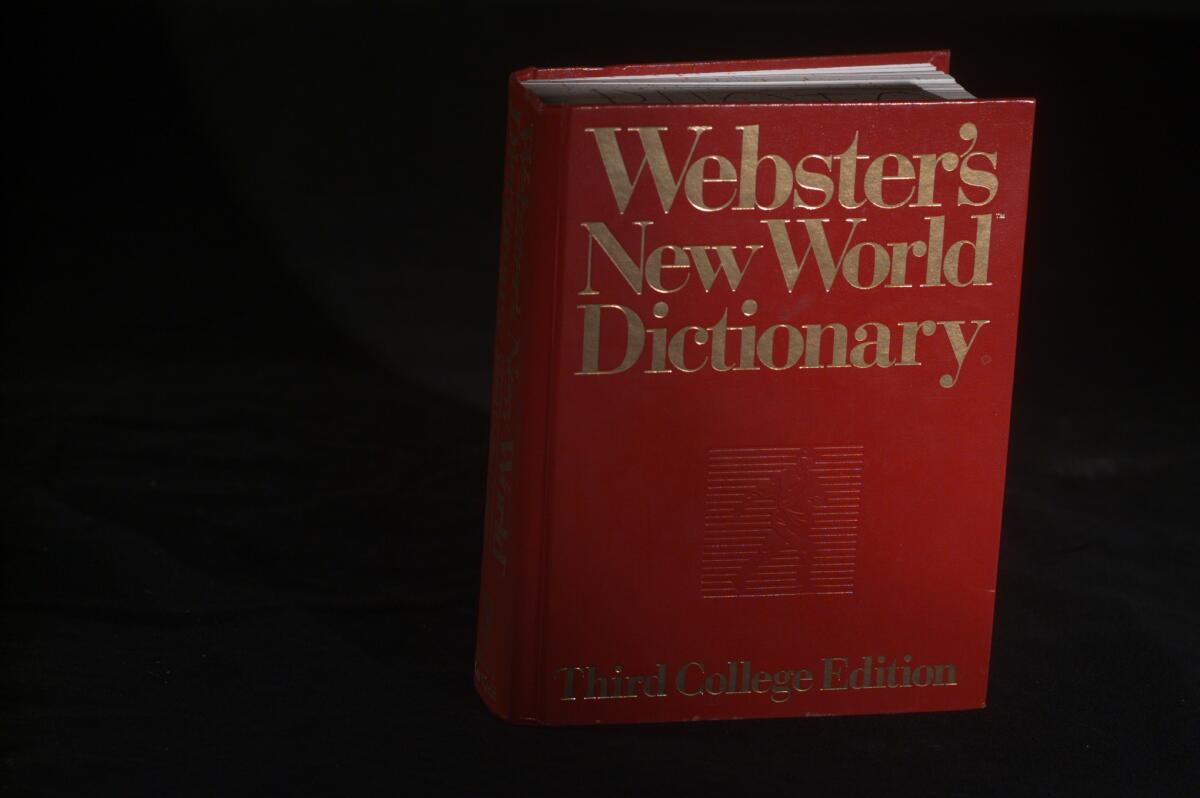A Word, Please: The mistaken ‘rule’ we haven’t heard the last of

When I first started writing this column in the early aughts, readers would often complain to me about sentence-ending prepositions. Or, to put that ironically: Sentence-ending prepositions were things readers would complain to me about.
In the years since, that complaint has steadily waned. It’s gotten so rare that I figured the idea was pretty much dead, gone the way of the ruler-wielding Miss Thistlebottoms who departed this grammatically imperfect world for the great stylebook in the sky.
Nope.
Earlier this year, Merriam-Webster’s dictionary posted on Instagram, “It is permissible in English for a preposition to be what you end a sentence with” (see what they did there?). The result: uproar, like this reply from a user going by the name of AJWarren74: “Absolutely do NOT end a sentence with a preposition!! It’s like fingernails on a blackboard!! UGH.”
Aah, that takes me back. Seems like just yesterday people were telling me I was wrong. Of course, correcting the publishers of one of the country’s leading dictionaries — professional lexicographers with decades of study and hard-earned expertise under their belts — is another matter entirely. It’s like telling your doctor that your liver is in your ear.
I learned two things from Merriam’s post and the ensuing uproar: 1. The myth about sentence-ending prepositions is alive and festering, and 2. Merriam’s could use some backup.
Where and whether or not to use an apostrophe trips up a lot of card writers this time of year, but June Casagrande is here to help.
So what’s this grammar myth all about? The idea is that prepositions like “with,” “about,” “to,” “at,” “in” and “on” take objects — nouns or pronouns that complete the thought. You spoke with Linda. You think about pizza. You walked to the store. You yelled at him. You’re grounded in reality. Your keys are on the table.
If you move any of those objects to an earlier position in the sentence and just leave the preposition parked at the end, the result could be a bad sentence. Linda is the person you spoke with. Pizza is what you think about. The store is where you walked to. He is who you yelled at. Reality is what you’re grounded in. The table is the thing your keys are on.
If you tell someone that a preposition at the end makes for a bad sentence, you’ll be right in a lot of cases, as the examples above prove. But not always. And if you tell people that this is a grammar rule they must follow, you’re not just giving them bad information — you’re telling them not to trust the instincts that lead English speakers to use prepositions well every day.
But you don’t have to take my word for it. You don’t even have to take the word of Merriam’s lexicographers. Every major grammar authority agrees, including the conservative ones.
“Not only is the preposition acceptable at the end, sometimes it is more effective in that spot than anywhere else,” advises Strunk and White’s “The Elements of Style.” Strunk and White argue persuasively that “A claw hammer, not an ax, was the tool he murdered her with” is superior to “A claw hammer, not an ax, was the tool with which he murdered her.” It sounds more natural and, as the authors argue, it’s more effective “because it sounds more violent.”
Or consider the words of one of the most conservative language authorities I know, Fowler’s Modern English Usage: “In most circumstances, especially in formal writing, it is desirable to avoid placing a preposition at the end of a clause or sentence,” the guide writes. “But there are many circumstances in which a preposition may or even must be placed late … and others where the degree of formality required governs the placing.”
Finally, consider this snarky example long misattributed to Winston Churchill (which researchers have since learned probably wasn’t Churchill at all but some unknown writer) about a sentence clumsily rewritten to move a preposition from the end: “This is the type of English up with which I will not put!”
June Casagrande is the author of “The Joy of Syntax: A Simple Guide to All the Grammar You Know You Should Know.” She can be reached at [email protected].
All the latest on Orange County from Orange County.
Get our free TimesOC newsletter.
You may occasionally receive promotional content from the Daily Pilot.




